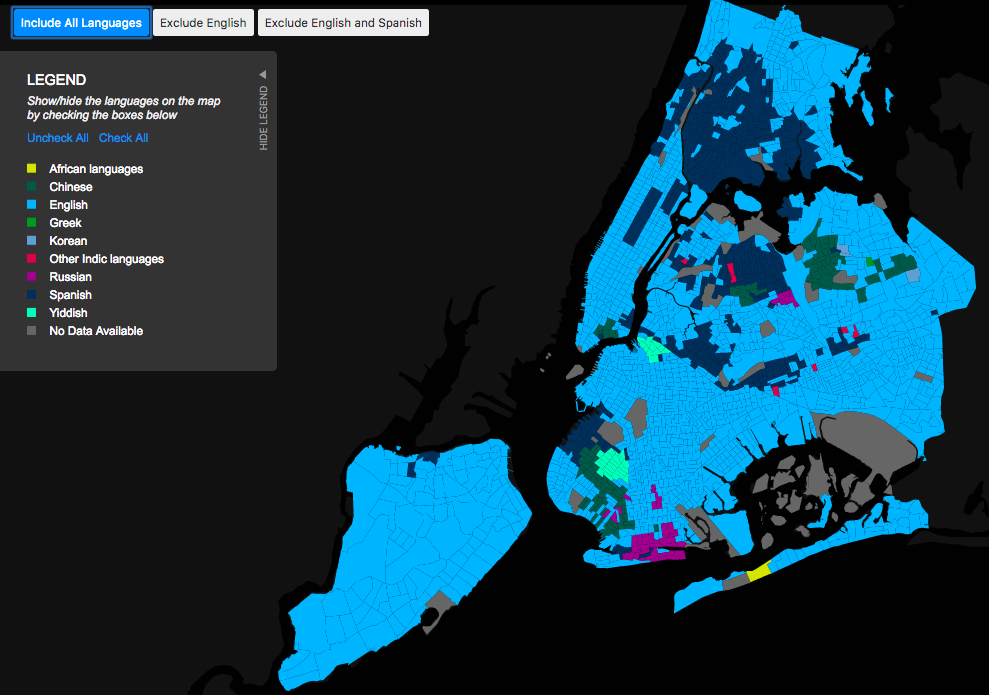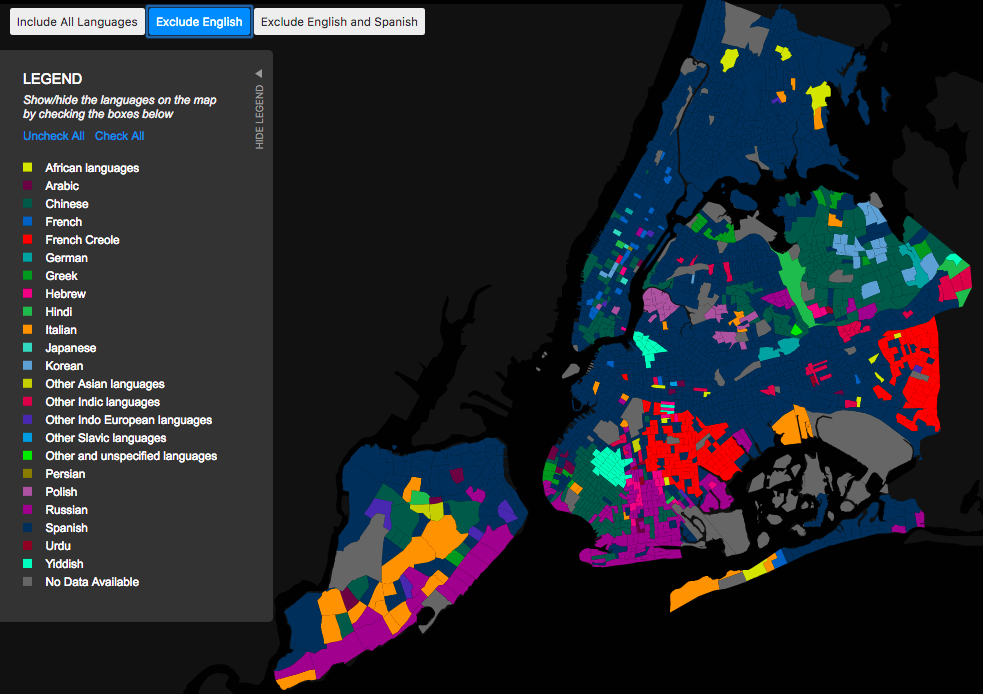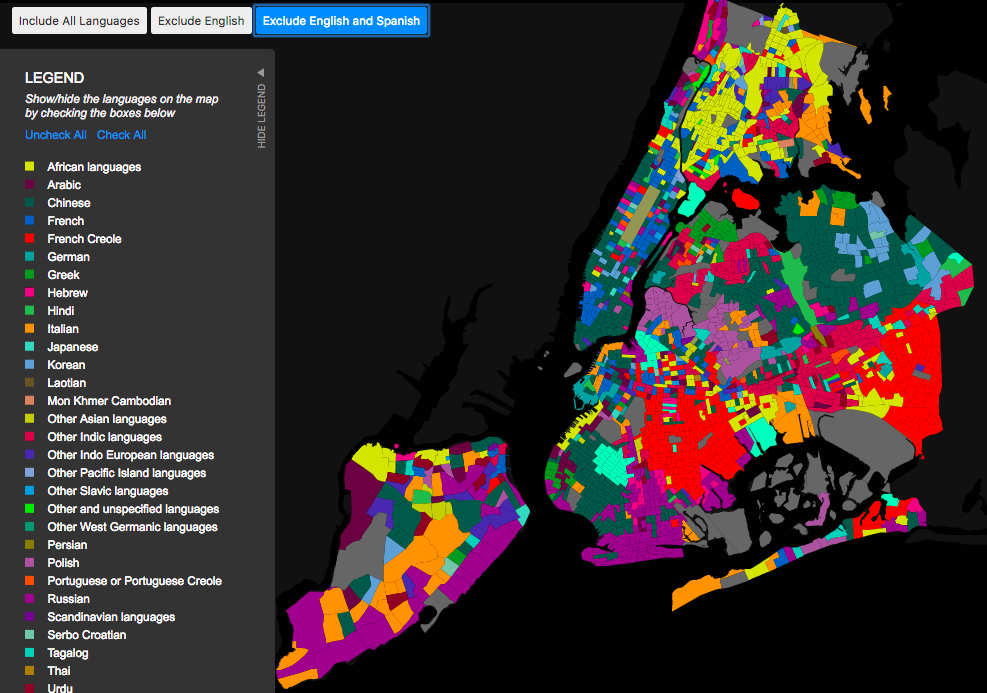
This map shows languages most frequently spoken at home by New Yorkers
New York City is one of the most cosmopolitan cities in the world, where you can hear languages from all around the world. Jill Hubley a Brooklyn-based web developer and designer decided to map this diversity and he created an interesting project that shows languages most frequently spoken at home by New Yorkers.
As you might suspect the most frequently spoken language in NYC is English (light blue) with Spanish (dark blue) and Chinese (dark green) being the first one in a couple of neighbourhoods. The fun starts when you exclude English from the list (by pressing a button on the top):
We can see that without English, Spanish and Chinese languages are overtaking the city. Hubley prepared one more scenario with both English and Spanish excluded but the map allows you to play around and switch on and off all the language data layers.
Now you can see how diverse and multicultural the city is! From Russian spoken mainly in Brighton Beach to large areas in Brooklyn where French Creole is the main language.
The project has been initially created for an exhibit at the Queens Museum entitled, “Map Mosaic: From Queens to the World”. Than Hubley decided to expand it to all five NY boroughs and make it interactive.
The map is based on the data coming from the 2014 American Community Survey of the U.S. Census, which asks people if they speak languages other than English at home. It’s built with D3.js and a touch of jQuery.
The map might not be the most beautiful visualization ever but it amazes you and therefore it does a really good job. Cool project!









